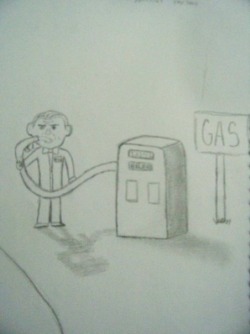The paintings will often use symbolism, which would explain fish being a common addition to the meal due to the miracles Jesus completed involving fish, as well as it being a symbol of Christianity. There are many reasons why portion sizes may have increased in these paintings, as well as many questions as to why. Did the artists realize they were increasing the portion sizes? Did they perhaps do it unconsciously due to an increased amount in their own diets? It may be impossible to ever know, but with improved technologies it appears that we can answer many questions that could not have been answered before.
One of the most famous events painted by artists is, without a doubt, the Last Supper. In these paintings, Jesus’ last supper with his disciples is depicted, with plenty of food shown. Among this are a main course, bread, as well as plates. Using new technology, researchers were able to compare the differences of portions in the paintings, including the size of the plates. In a thousand-year period, the portion sizes depicted have continuously increased as time went on, with an overall increase of 69% in the main course, 23% in the bread loaf size, and 66% in the plate size. Interestingly enough, the most common descriptions in the Bible of the Last Supper include only wine and bread, however many depictions include many other foods, especially fish.
The paintings will often use symbolism, which would explain fish being a common addition to the meal due to the miracles Jesus completed involving fish, as well as it being a symbol of Christianity. There are many reasons why portion sizes may have increased in these paintings, as well as many questions as to why. Did the artists realize they were increasing the portion sizes? Did they perhaps do it unconsciously due to an increased amount in their own diets? It may be impossible to ever know, but with improved technologies it appears that we can answer many questions that could not have been answered before.
0 Comments
With spring break coming upon us so soon, if not already, airports around the United States are using the same preventative measures as they began to use after the Christmas Day underwear bomber. With so many people traveling in the upcoming weeks, the security measures have greatly increased, including the use of the controversial full-body scanners. Many travelers are upset over this news, feeling that it is an invasion of privacy, while others feel safer about traveling at this time. By the end of the year, there is said to be over 1,000 of the scanners installed in airports across America, being paid for by the airlines themselves.
Another controversy arrived from this, because it could cause raised airfare charges for passengers, in trade for their increased safety. Personally, this sounds like a pretty good deal, but I do understand the outrage about it. Chances are it will still be cheaper than gas prices for driving to your destination, and an improved sense of security at the same time. One thought I have on this is why the airports are only now, for spring break, increasing these security measures? It seems like after the underwear bombing attempt, they would be doing these things year-round on every single flight, not just during times of increased travel. Feel free to leave any thoughts you may have about this. When you think of articles that might appear under a Health tab, there are many possibilities. These range from fitness health, body/physical health, mental health, and even just the overall health of YOU. This article focuses on the STING method to help stop procrastinating (something I’ve been doing a lot of lately). I found the method while using StumbleUpon, looking for a good health topic and this one seemed quite fitting. Rather than stumbling around until reaching a health site, I simply narrowed my stumbles to self-improvement, a subcategory of, you guessed it, health. The STING method goes as follows:
S - Select one task. T - Time yourself. I - Ignore everything else. N - No breaks. G - Give yourself a reward. Debate has been raging ever since the killer whale attack at San Diego’s Sea World. The whale attacked one of the trainers when she got in the water with him, hair in a ponytail. The killer whale in question has attacked people twice before, though one of the attacks was on a man who snuck in after hours and got into the water with the whale. The argument now is whether or not the whale should be put down for attacking people.
Sony’s PlayStation 3 has been having some troubles in the last week. When gamers unexpectedly were unable to play certain games that required Internet access, and when simply turning on the console without connecting to the Internet, they found their systems were locking them out entirely. However, the problems do not seem to be appearing in more current systems, released after mid-2009.
PS3 gamers are looking for reimbursements, especially because many lost money on rented movies they were unable to watch, as well as disallowing access to the PlayStation store and causing players to lose user data and other information pertaining to their game and progress, all due to this glitch. Sony has promised to have the problem resolved in a timely manner, but it also causes us to wonder: should something like this have happened in the first place? The first versions of the PlayStation only allowed games to be played from a disc or cartridge, and more recently, DVDs and Blu-Ray discs. However, a problem such as the one which has occurred never would have happened had Internet access not been needed to play the games. With the world becoming more dependent on the Internet and technology for just about everything is it good for all industries to be following suit? This raises more questions concerning what will happen if we face a national or global disruption in the technology resources to connect to one another. Of course, gamers have been upset about the glitch for many reasons, but they are only part of the population. If something like this were to affect the nation or globe as a whole, what would happen then? This seems to be only a stepping stone on the pathway to failure of systems around the world. Yet another earthquake is devastating a country, only this time it’s Chile. Early this morning an 8.8 earthquake struck Chile, and over 120 deaths have been verified already. Tsunami warnings have been issued around the Pacific by the Pacific Tsunami Warning Center; specifically Hawaii, Japan, Russia, Philippines, Indonesia, and the South Pacific.
The country has suffered major blows like this before, including a 9.5 earthquake in 1960, and the destruction this time is no different. Airports, roads, bridges, and ports have been shut down due to damages, and copper mining has been halted. In many places, wide cracks and gouges have appeared, with automobiles and houses slipping in to one extent or another. Telephone and power lines in working condition are nearly non-existent, allowing few people information about family and friends. Aftershocks have not given any relief, many of them over 5.0, and a few being over a magnitude of 6.0. The recent devastation brings back memories of last month’s 7.0 earthquake that struck Haiti. The damage has hit hospitals, museums, and leaving hundreds of thousands homeless. Hawaii’s governor has declared a state of emergency as the state prepares for the imminent tsunami produced by the immense earthquake. American Idol star Elliot Yamin was in Chile for a music festival and sent messages to his Twitter early this morning, and has since been able to contact CNN for an interview, providing a first-hand experience of the destruction. Despite PETA’s sometimes controversial campaigns and many acronyms that poke fun, replacing People for the Ethical Treatment of Animals with other words that have the same lettering, they do have a good message. And supporting this message is Twilight star Kellan Lutz. Taking a stance with his adopted dog Kola, Lutz appears on posters which state “Buying Animals is Killing Animals” and “Adopt, Don’t Buy”. In an interview with PETA, Lutz states “There are surprisingly so many animals in these animal shelters. It’s sad, and knowing that they get euthanized…and there’s a lot you can do…spay or neuter your pets so that doesn’t happen.”
In the interview, he also explains his experience after finding Kola curled up in the back of a cage at an animal shelter. Twilight co-star Christian Serratos has also taken a part in PETA, who posed a few months ago for PETA’s campaign “I’d Rather Go Naked than Wear Fur”. Many rumors swirl around PETA and what their real intentions are, but the Twilight stars intentions are definitely positive, wanting to support the adoption of animals rather than purchase them from breeders or pet stores. Purchasing them in the latter way described is often supporting puppy mills in which the animals are abused and not taken care of well at all. Many animals that come from breeders, puppy mills, etc. end up filling up animal shelters, and whether they are no-kill shelters or not doesn’t matter- because the shelters are still filling up and animals everywhere are suffering because of it. Many Americans will eat French fries as often as they eat at fast food restaurants, but they also don’t know what they’re putting into their bodies. After reading an article on Yahoo! Health, I decided to summarize their findings here and the link to the article will be provided at the end. The article also makes suggestions as to what you can eat instead of the sodium-filled, calorie-congested, and fat-loaded fries often consumed.
Nutrient: Fat: 65 grams (20 saturated) Nutrient: Cholesterol: 300 milligrams Nutrient: Sodium: 2400 milligrams Nutrient: Potassium: 3500 milligrams Nutrient: Carbohydrate: 300 grams Nutrient: Fiber: 25 grams Nutrient: Protein: 50 grams I think it would be appropriate to begin with the worst of the worst. Packing a whopping 1,920 calories, 147 grams of fat (63 grams saturated fat), and 3,580 milligrams of sodium is Chili’s Texas Cheese Fries with Jalapeño Ranch. Basing this information on the suggested daily allowance for specific intake values in adults and children above 4 years of age on a 2,000 calorie diet, this would be enough calories in a single plate of these fries, and maybe some yogurt afterwards to meet calorie recommendations in a day. The fat content is nearly 2 and a half times as much is recommended for intake in a day, and the saturated is just over 3 times as much, with the sodium clocking in 1 and a half times as much as is recommend in a single day. For the worst order of some plain ’ol regular fries? Try Five Guys fries, a restaurant chain that originated in Virginia, and their regular fries are packing 1,464 calories, 71 grams of fat- 14 grams of which is saturated- and 213 milligrams of sodium. Compare that to the suggested daily intake in the chart above, and you’ve exceeded your suggested fat intake, nearly reached the saturated fat intake, and are nearly ¾ of the way to your suggested daily calorie intake. Sodium on this one could be worse, but over 200 milligrams is plenty in one sitting. Add to that any burgers and/or hot dogs you may order, and you’re more than likely going to surpass everything. For fans of Arby’s curly fries, you may be in for a big surprise, but what you’re putting into your body is even bigger. With 640 calories, 34 grams of fat (5 grams of which is saturated), and 1,460 milligrams of sodium, I’m sure these fries are delicious. Healthy? Not so much. As for wedge fries, Jack in the Box’s Bacon Cheddar Wedges are on the list at 715 calories, 45 grams of fat (13 grams saturated, 1 gram trans), and 905 milligrams of sodium. I’m sure you’ve been waiting to learn what the “healthiest” French fries out there are, and you may or may not be surprised to learn they come from McDonalds. Their small French fries pack in 230 calories, 11 grams of fat- 5 grams saturated-, and 160 milligrams of sodium. Note that that is the small fries. For alternatives to these unhealthy fry options, check out the original Yahoo! article, and especially try to read the last paragraph of their article for an interesting fact about the 3 largest fast food restaurant chains. http://health.yahoo.com/experts/eatthis/46018/americas-worst-french-fries-and-what-you-should-eat-instead Though it has been quite some time since George W. Bush was in office, it’s going to be a long time before anyone at all forgets the high gas prices that struck across America. In this political cartoon, Audreanna states that “I drew it because my art teacher said we had to draw a self-inspired political cartoon. We had to pick a political subject and draw about it. At the time, gas prices were insane and Bush was still in office.”
If you or anyone you knew owned a car around that time, no doubt you heard about the gas prices continuously rising. The message behind the cartoon goes farther than gas prices being at insane highs. “In the cartoon, Bush is the gas guzzler while the pump is everyone else and their money.” In the midst of wars and providing relief for Haiti, there apparently aren’t enough funds left for the environment. Or at least not in Florida where over 500,000 tires, as well as nylon and steel, were sunk in 1972 with the intention of creating an artificial reef offshore near Ft. Lauderdale. Not very surprising, the sea life wasn’t too happy with the newest addition to its waters, and decided they didn’t want to live on tires. Can you blame them?
Thousands have become wedged against a natural coral reef, which causes the sea life to be unable to thrive, as well as block coral growth. Other tires have since spread out across the ocean floor over the span of 30 football fields. The clean-up program, set to return this summer, will not be able to do so until at least 2012. With approximately 10% of the tires pulled up, there is still hundreds of thousands left. Divers who participate in the program are from the U.S. Army and Navy, and are only able to do the clean-up on weather-specific days (calm waters and warm weather). The state is unable to fulfill the needs on their own, needing government help to clean-up the oceans; the state of Florida has already given 2 million dollars to provide for the program, and nearly $250,000 has been used. The original goal was to have 300,000 tires removed, with 50,000 of them this summer, but will not be able to happen now. Understandably, the government does have its priorities for where funds are allocated to, but these tires are devastating the marine life in the oceans. It seems that there should be funds somewhere that are kept for things like this- but there doesn’t seem to be. |



 RSS Feed
RSS Feed